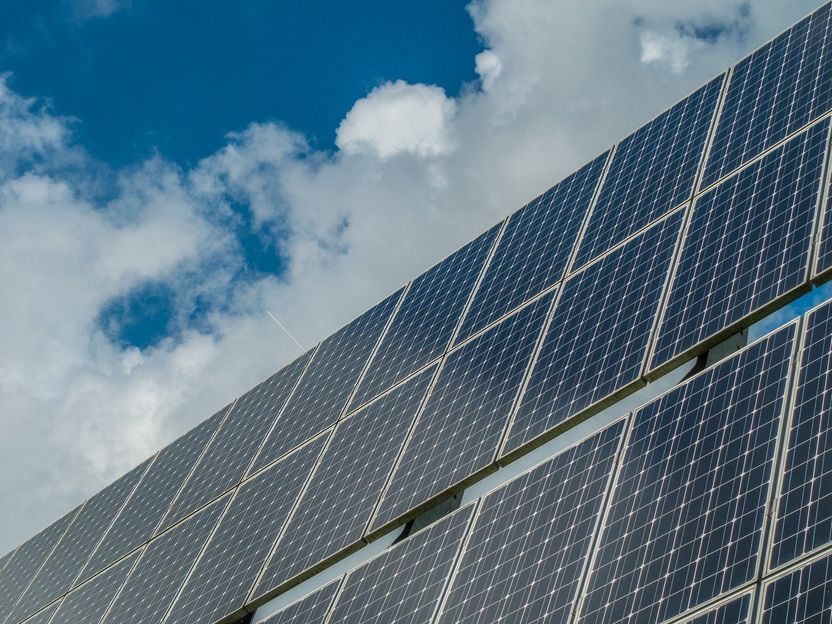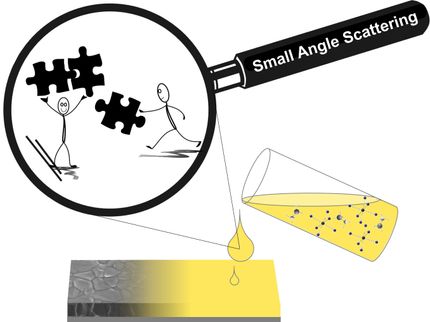Perovskite solar cells soar to new heights
Novel method to fabricate lead halide perovskite solar cells with record efficiency
In a joint effort between Pavia University (Italy) and the Center for Advancing Electronics Dresden at Technische Universität Dresden (Germany), researchers developed a novel method to fabricate lead halide perovskite solar cells with record efficiency.

Symbolic image
pixabay.com
Metal halide perovskites have been under intense investigation over the last decade, due to the remarkable rise in their performance in optoelectronic devices such as solar cells or light-emitting diodes. The most efficient devices, fabricated in the so called ‘standard architecture’ commonly include processing steps performed at high temperature, thus increasing their energy payback time and limiting the possibility to integrate them in emerging applications such as flexible and wearable electronics. An alternative device architecture - termed the ‘inverted architecture’ - eliminates the need for high temperature processing, but generally leads to a lower photovoltaic efficiency.
In a joint collaborative effort between the University of Pavia and the Technische Universität Dresden, researchers have developed a novel method to significantly improve the efficiency of inverted architecture solar cells. The method is based on a modification of the interfaces of the perovskite active layer by introducing small amounts of organic halide salts at both the bottom and the top of the perovskite layer. Such organic halide salts, typically used for the formation of two-dimensional perovskites, led to the suppression of microstructural flaws and passivation of the defects of the perovskite layer. Using this approach, the team has achieved a power conversion efficiency of 23.7% - the highest reported to date for an inverted architecture perovskite solar cell.
“Importantly, the improvement in performance is accompanied by an increase in device stability” says Prof. Giulia Grancini, an Associate Professor of Chemistry at the University of Pavia. Considering that stability remains one of the key hurdles for the commercialization of perovskite solar cells, the simultaneous improvement of efficiency and stability is particularly promising.
“The fact that our devices are fabricated at low temperatures of less than 100°C and that our approach is fully applicable to the fabrication of large area devices takes us one step closer to large-scale utilization of perovskite solar cells” adds Prof. Yana Vaynzof, Chair for Emerging Electronic Technologies at the Institute for Applied Physics and Photonic Materials and the Center for Advancing Electronics Dresden (cfaed).
The record efficiency achieved by the researchers brings perovskite solar cells to new frontiers. Considering the enhanced stability and the scalability of the novel approach, it’s only a matter of time until perovskite solar cells can be found on every rooftop.
Original publication
Other news from the department science

Get the chemical industry in your inbox
By submitting this form you agree that LUMITOS AG will send you the newsletter(s) selected above by email. Your data will not be passed on to third parties. Your data will be stored and processed in accordance with our data protection regulations. LUMITOS may contact you by email for the purpose of advertising or market and opinion surveys. You can revoke your consent at any time without giving reasons to LUMITOS AG, Ernst-Augustin-Str. 2, 12489 Berlin, Germany or by e-mail at revoke@lumitos.com with effect for the future. In addition, each email contains a link to unsubscribe from the corresponding newsletter.



























































